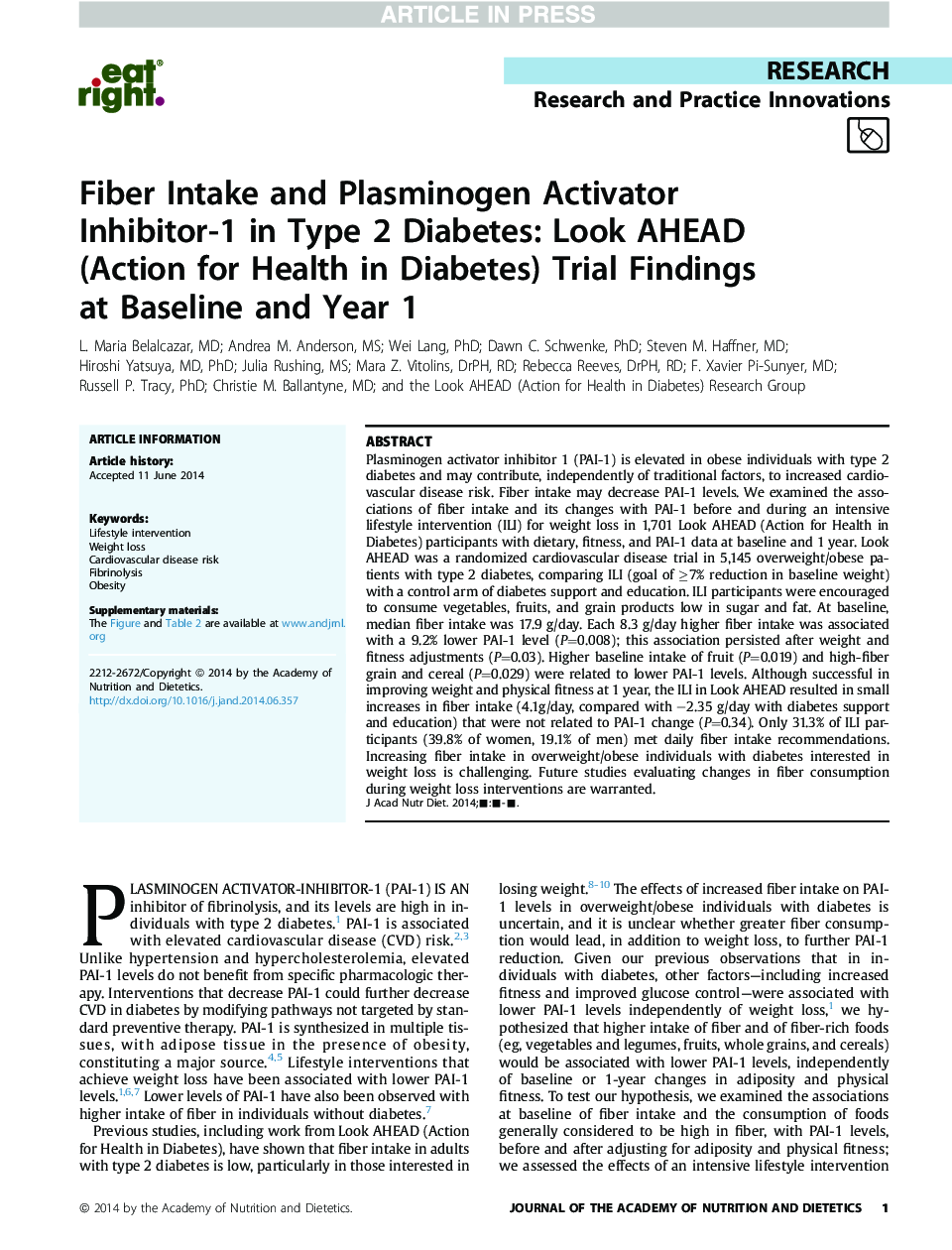| Article ID | Journal | Published Year | Pages | File Type |
|---|---|---|---|---|
| 5870013 | Journal of the Academy of Nutrition and Dietetics | 2014 | 13 Pages |
Abstract
Plasminogen activator inhibitor 1 (PAI-1) is elevated in obese individuals with type 2 diabetes and may contribute, independently of traditional factors, to increased cardiovascular disease risk. Fiber intake may decrease PAI-1 levels. We examined the associations of fiber intake and its changes with PAI-1 before and during an intensive lifestyle intervention (ILI) for weight loss in 1,701 Look AHEAD (Action for Health in Diabetes) participants with dietary, fitness, and PAI-1 data at baseline and 1 year. Look AHEAD was a randomized cardiovascular disease trial in 5,145 overweight/obese patients with type 2 diabetes, comparing ILI (goal of â¥7% reduction in baseline weight) with a control arm of diabetes support and education. ILI participants were encouraged to consume vegetables, fruits, and grain products low in sugar and fat. At baseline, median fiber intake was 17.9 g/day. Each 8.3 g/day higher fiber intake was associated with a 9.2% lower PAI-1 level (P=0.008); this association persisted after weight and fitness adjustments (P=0.03). Higher baseline intake of fruit (P=0.019) and high-fiber grain and cereal (P=0.029) were related to lower PAI-1 levels. Although successful in improving weight and physical fitness at 1 year, the ILI in Look AHEAD resulted in small increases in fiber intake (4.1 g/day, compared with -2.35 g/day with diabetes support and education) that were not related to PAI-1 change (P=0.34). Only 31.3% of ILI participants (39.8% of women, 19.1% of men) met daily fiber intake recommendations. Increasing fiber intake in overweight/obese individuals with diabetes interested in weight loss is challenging. Future studies evaluating changes in fiber consumption during weight loss interventions are warranted.
Related Topics
Life Sciences
Agricultural and Biological Sciences
Food Science
Authors
L. Maria MD, Andrea M. MS, Wei PhD, Dawn C. PhD, Steven M. MD, Hiroshi MD, PhD, Julia MS, Mara Z. DrPH, RD, Rebecca DrPH, RD, F. Xavier MD, Russell P. PhD, Christie M. MD,
